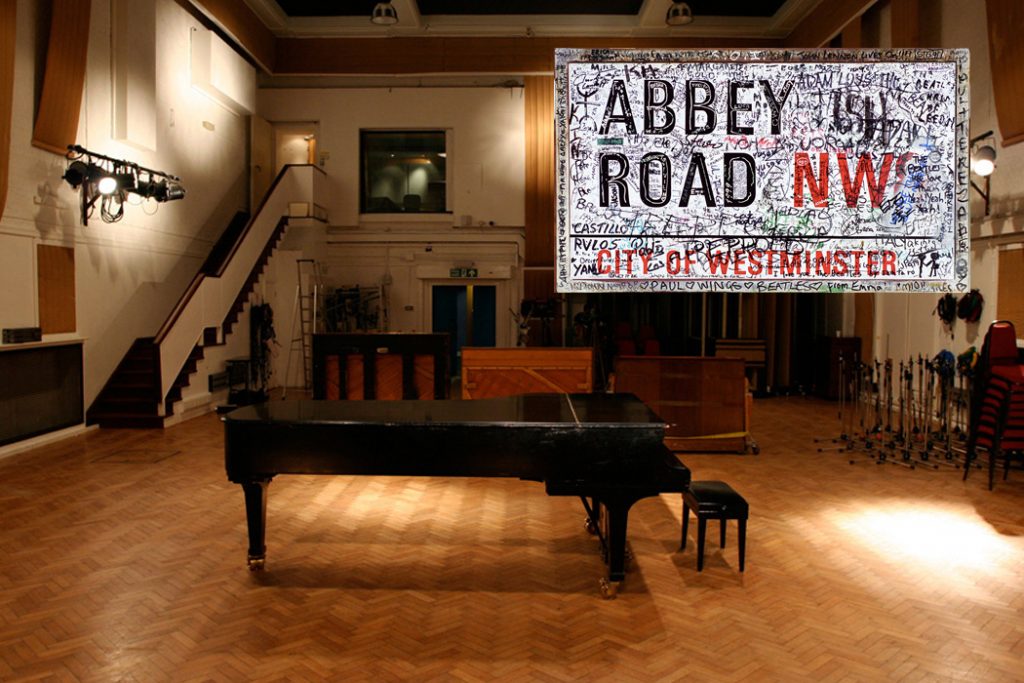+ Learning to record and mix music? Explore Soundfly’s acclaimed online courses on mixing, production, and songcraft — click to subscribe.
Reverb may be the most important effect you can use in your mix (besides all the others). It’s reverb that gives your mix depth, makes it sound “real,” and creates a sense of space and character. Often, the use of reverb is the defining characteristic of a particular mix or even an entire style or genre.
I mean, can you picture ’80s hair metal without copious amounts of reverb? Of course not!
But reverb is by nature messy. By definition, you’re taking clean, succinct sounds and spreading them out, adding to them, and generally putting more into a mix than is there naturally. This means using reverb is one of the easiest ways to make a mix muddy.
Abbey Road to the Rescue
One of the easiest and most straightforward ways to free up space in a mix is to use EQ to clean up your reverb sends. There are a few ways to do this, and we’ll mention a couple forthwith, but first and foremost there’s the Abbey Road Reverb Trick.
The Abbey Road trick is so named because it was invented at Abbey Road Studios to help create space in mixes that may otherwise be overwhelmed by reverb. The technique is quite simple and surprisingly effective.
It goes like this.
- Set your reverb plugin up on its own buss (you should be doing this anyway, rather than inserting reverb directly in tracks).
- Use the send on your dry track to send your preferred amount of signal to the reverb.
- Make sure your reverb plugin is only outputting wet signal (most plugins mix the dry and wet signal by default). This is simply so your reverb buss is really just a reverb buss.
Now the Abbey Road part.
- Insert an EQ plugin before the reverb plugin. It’s important to insert this EQ before the reverb, because you want to tame frequencies that are hitting the reverb to begin with.
- Now set up a high pass filter and filter out everything below 600 Hz. That’s not a typo. You want to take off all that low-end mud.
- Next set up a low pass filter and filter out everything above 10 kHz.
And that’s it! This simple trick opens up space in a mix in almost magical fashion, by eliminating boomy, low frequency tails in the frequency range that tends to get jumbled anyway, while also taking out distracting high-frequency tails that can sound unnatural.
Other Tricks
Notching
Once you’ve set up an Abbey Road style EQ before your reverb, you can also try notching in particular spots for certain instruments. For example, on vocals try a 1 to 4 dB drop at around 2 kHz to smooth things out (especially for a yelling tenor). You might also try a small boost to enhance certain frequencies on the way in to the reverb, but be careful if you’re trying to create space.
Band-Pass Adjustments
When you’ve gotten a handle on the basic function of the Abbey Road trick, you can start playing with the band-pass. For some reverbs, perhaps a purposefully boomy kick drum that appears sparingly, you might drop the high-pass a bit to allow a little low end rumble. Or you could try increasing the amount of low-pass filter to clean up even more of the high-end shine. Often, adjusting to 6 kHz instead of 10 kHz works great for this purpose.
EQ After Reverb
You can also use an EQ to fine tune the reverb’s output after the fact. You can do this to further tame your sound even if you’re already using an Abbey Road EQ before the reverb.
In this case, you still might want to apply high and low pass filters, cutting below 250 Hz or so and above 10 kHz, depending on the signal. In addition, solo the instrument or vocal plus reverb, and listen for any resonances that might be getting in the way, and apply a narrow cut in these areas.
Using the Reverb’s EQ
While we’re at it, don’t ignore the EQ setting in the reverb itself. Most reverb plugins include some sort of rudimentary settings, if not a full-blown EQ section. Often this setting is a simple low pass frequency which you can adjust or remove entirely, and many reverbs have both a low- and high-pass filter.
Be aware that in most reverb plugins, the EQ section is affecting the signal post-reverb, so you can’t specifically apply the Abbey Road trick in this way. Nevertheless, the EQ section in your reverb plugin is still a good place to rein in a cleaner sound.
Listen Critically
The key to any EQ job is critical listening. Listen to your moves in the context of the entire mix, not just on solo. The great thing about the Abbey Road trick is that it helps free up space in the rest of the mix so make sure you listen with that in mind. The exact same fine-tuned settings won’t apply every time.
And finally, don’t be afraid to experiment and spend some time with your reverb EQ. Treat the reverb as carefully as you would any instrument and it will play just as important a role — without getting in the way.
Don’t stop here!
Continue learning with hundreds of lessons on songwriting, mixing, recording and production, composing, beat making, and more on Soundfly, with artist-led courses by Kimbra, Com Truise, Jlin, Kiefer, and the new Ryan Lott: Designing Sample-Based Instruments.





